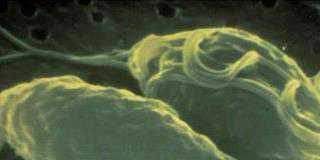Skin disease in dogs is a major problem in the coastal areas. Some diseases can be life-threatening, so it is important to treat them early. The following is intended as a guideline – seek advice from your vet or animal health officer first.
The most important skin diseases of dogs:
- Sarcoptic mange – This is caused by the tiny Sarcoptes scabiei canis mite, which cannot be seen without a microscope. Symptoms include frequent scratching and a loss of hair around the eyes and over the body. The ear tips are crusted and mites infest the head, ears, muzzle and root of the tail. If you think your dog has this disease, visit a vet immediately, as it can spread to people.
- Demodectic mange – Caused by Demodex canis, this is another mite that cannot be seen with the naked eye. If a dog has this type of mange, its face and forelegs will be almost bald, with small scabs. Unlike sarcoptic mange, it is not itchy or infectious to people. Dogs with this disease often have worms or are not getting enough food. De-worm the dog and increase its food. Also dip it with a dip from the co-op or vet.
- Itch mite – This skin disease is caused by the Cheyletiella mite, which is larger than other mites. The disease causes itchiness, but no hair loss. The condition can spread to humans and will appear as itchy small red areas, usually on the soft skin of the arms or stomach. It is easy to treat in dogs with a dip from your co-op or vet.
- Fly strike – The dog fly (Stomoxys calcitrans) and the black midge bite the ears of dogs, causing crusting and bleeding. This can be prevented through fly control (the flies breed in manure and compost) and by applying Vaseline or fly repellent to the ears. Do not apply these directly on open sores but around them.
- Fleabite allergies – Ctenocephalides felis is a common parasite of dogs and cats that can also bite people. Some dogs are allergic to fleas and become itchy. Red patches are seen on the rump and along the back, where dogs scratch themselves on furniture or branches. Treat the dog and the area it sleeps in with a flea control remedy from your vet or co-op. Flea control is important, otherwise fleas can spread throughout your home.
Of mange and mites
Like ticks, mites belong to the Arachnida family. There are more than 45 000 mite species. Most can only be seen with a microscope and live in a diverse array of habitats. Many live as parasites on plants and animals. ‘Mange’ is the name given to skin diseases caused by parasitic mites in wild and domestic animals. Sheep scab, for example, is caused by mites.
Depending on their species, mites will either embed themselves in the skin (sarcoptic mange) or the hair follicles (demodectic). In humans, these types of mite infection are called ‘scabies’ and ‘demodicosis’ respectively. Not all mites, however, are pests; some help ‘process’ the organic matter in soil that crops need to survive.
Source: Directorate Communication Services, department of agriculture.












